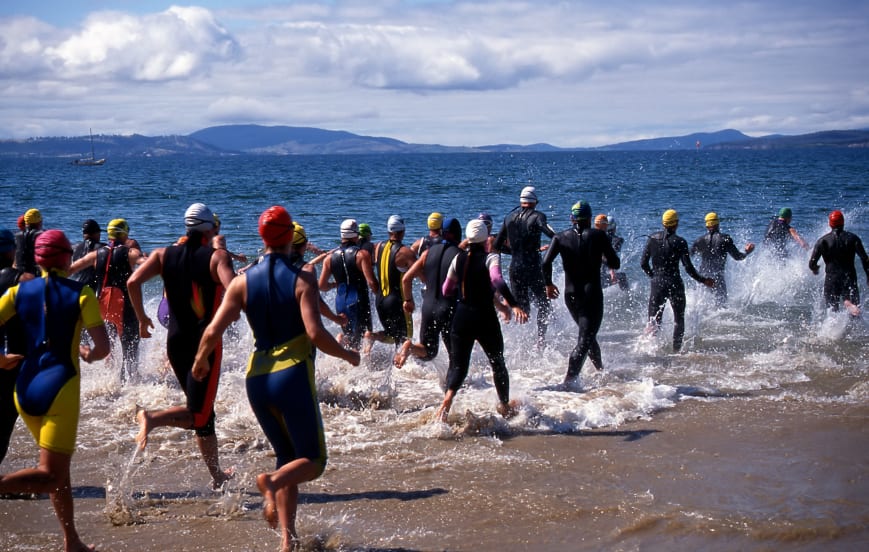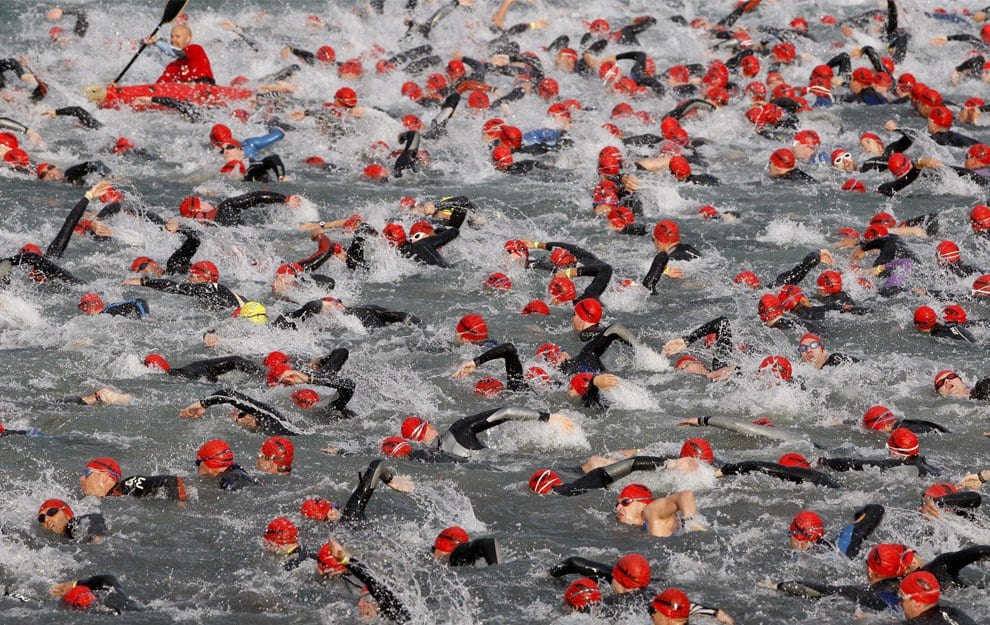Uncategorized
4 Tips for a Safe Triathlon Swim
 Another death of a triathlete during the swim portion of Ironman Kentucky yesterday prompts many questions for triathletes. Why is the swim becoming so deadly? A Minneapolis Heart Institute cardiologist, Dr. Kevin Harris, published a study in the Journal of the American Medical Association released a study in 2010 on the sudden death during triathlons. The results came from studying the deaths identified in the US Registry of Sudden Deaths in Athletes over 30 years and USAT records over the last 5 years and the autopsy reports from medical examiners.
Another death of a triathlete during the swim portion of Ironman Kentucky yesterday prompts many questions for triathletes. Why is the swim becoming so deadly? A Minneapolis Heart Institute cardiologist, Dr. Kevin Harris, published a study in the Journal of the American Medical Association released a study in 2010 on the sudden death during triathlons. The results came from studying the deaths identified in the US Registry of Sudden Deaths in Athletes over 30 years and USAT records over the last 5 years and the autopsy reports from medical examiners.
The breakdown of the results:
14 deaths from 14 different triathlons; 13 during the swim and 1 during the bike
6 occurred during short distances, 4 intermediate distances, 3 in long (Ironman) distances
Autopsy records from 9 of the deaths revealed that 7 were the result of cardiovascular abnormalities
Scientific America asked Dr. Harris why the shortest and first portion of the race could be the deadliest. His answer:
First, the adrenaline surge and pure number of athletes entering the water at the same time; second the fact that I suspect many athletes come from a background in running or other sports and may be less adept at swimming; third, swimming in a triathlon is totally different sport than doing some laps in the pool due to variability of extremes of waves [as well as] people swimming around you and on top of you; fourth, the inability to rest properly if needed (or call for help) as you could do in the marathon and bike [segments]; and, fifth, the difficulties in being noticed if the swimmer is in trouble due to the number of athletes in a body of water, which is not transparent. I think these are some of the factors that are related.
So what can you do? Steps to a safe swim:
- Know your family medical history, esp. any heart related conditions. If you have a family history of heart issues, see your doctor before competing- better safe than sorry.
- If you are a beginner triathlete, start with small races to develop a comfort level swimming in a pack.
- Check the complete list of what to know about the swim course before race day
- Always warm up before the swim start- in the water whenever possible!
More great tips: hubpages.com
Share your tips with us!



Several culminating factors:
1.) Poorly staged events – not enough spacing between swimmers. should be small groups at the time with chip timing.
2.) Over estimation of ones ability to swim period! Most competitors do not adequately prepare for the event, except the bike portion which most Triathletes do well and most spend most of their training time on.
3.) Irresponsible, careless, and arrogance on the part of fellow competitors that do not care who they hit in the head with their arm
4.) Little to no rules set up by the WTC that govern competitor actions in the water.
5.) Poor technique and little education by Tri coaches about being able to see ahead of you for the safety of others. Rather it is all about direction and speed and not about fellow competitor safety
6.) Lack of safety advice, tips and reminders from event organizers prior to the swim for swimmers to be aware of others around them and not to bonk them on the head or swim over them.
7.) Too tight fitting swim caps – they need to come in different sizes.
Very well thought out points that should be considered by race directors. Also points that athletes should take into consideration when training for triathlons. Thanks for your comments!